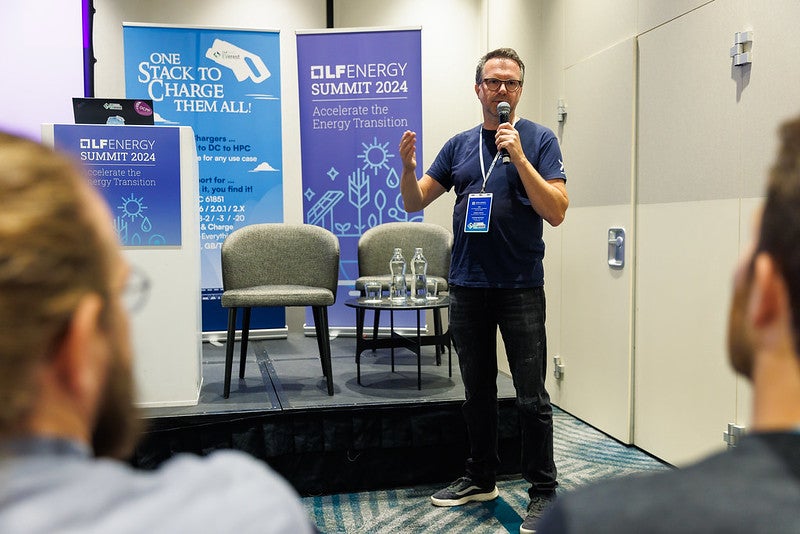LF Energy Summit Recap and Video: EVerest: How Open Source EV Charging Solutions Can Help Stabilize the Grid
At LF Energy Summit 2024 in Brussels, Robert de Leeuw from PIONIX provided an update on the EVerest project. EVerest is an open source software stack designed to standardize and streamline the operation of electric vehicle (EV) charging stations. Here are the key takeaways from the presentation, which covered the project’s current status, its potential to stabilize the grid, and its broader impact on the EV ecosystem (full video follows below).
1. The Challenge of EV Charging Reliability
de Leeuw kicked off the session by highlighting the ongoing reliability issues with EV charging. Despite the growing adoption of EVs, interoperability challenges between charging stations and vehicles persist, resulting in a failure rate of up to 25% during charging attempts. This situation is further complicated by the vast number of protocols and standards involved in EV charging, including IEC 61851, ISO 15118, and more. Each of these requires careful integration and communication between different systems, making it difficult to ensure seamless charging experiences across various vehicles and charging infrastructure.
2. EVerest as the Open Source Solution
EVerest addresses these challenges by providing a modular, open source software stack that can be used to power a variety of charging station types, from small home chargers to large public charging sites. Its modular design allows easy integration of various protocols and energy management systems, creating a unified solution for managing charging operations. This open source approach also allows manufacturers and developers to test their systems against a common software framework, which improves interoperability and reliability in the field.
3. Improving Grid Stability with Vehicle-to-Grid (V2G) Technologies
One of the most promising aspects of EVerest is its potential to help stabilize the grid through V2G technology. de Leeuw explained how EVs can be leveraged as mobile batteries, feeding energy back into the grid during peak demand times. For instance, when people return home and start charging their vehicles in the evening (often during peak energy consumption), smart charging solutions can delay or even reverse the flow of energy to support grid stability. While V2G technology is still under development, it presents a game-changing opportunity for managing energy demand and preventing grid overload.
4. EVerest’s Growing Adoption and Community
The EVerest project is gaining traction, with several charging station manufacturers and universities already adopting the stack. Despite many companies remaining under non-disclosure agreements (NDAs), the project is seeing increased participation from both standardization bodies and developers. de Leeuw emphasized the importance of open source solutions in breaking down proprietary silos, enabling the industry to move faster by building on shared technology. He also highlighted the growing community of developers contributing to EVerest, which is fueling innovation and rapid adoption.
5. The Path Ahead: Modular, Scalable, and Sustainable
EVerest is designed with scalability in mind, offering configurable modules that allow users to adapt the stack to different charging scenarios, from simple home chargers to complex systems with local energy management and renewable energy integration. This flexibility not only makes it easier for companies to deploy but also supports sustainability goals, as EVerest can be used with retrofitted hardware and integrated with solar panels or battery storage systems.
Looking ahead, de Leeuw outlined a roadmap for EVerest, which includes further development of V2G capabilities, expanding support for DC charging protocols, and integrating grid management solutions. As the EV industry continues to grow, the adoption of open-source technologies like EVerest could play a critical role in ensuring that the grid remains stable while facilitating the widespread deployment of clean transportation.
